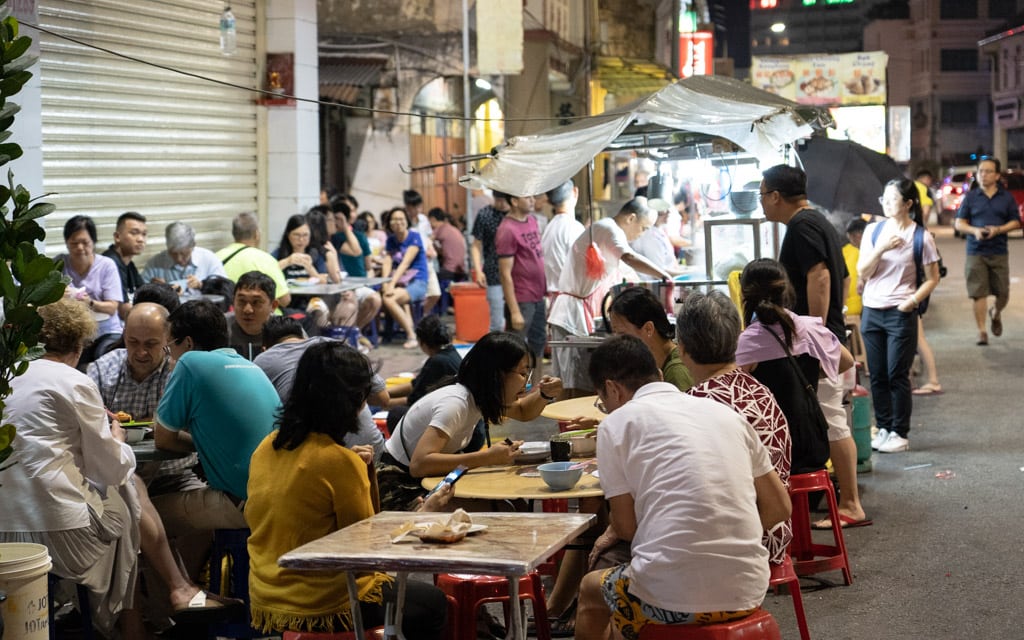
Chulia Street Night Market, located in the heart of Penang, George Town, Malaysia, is a night market popular with locals, tourists, and foodies. While the market is not as large as other night markets in Malaysia, such as the Jalan Alor Night Market, you will still find all your favorite Malaysian dishes here. This includes char kway teow, curry mee, wantan mee, satay, laksa, hokkien mee, and more.
The center of Chulia Street Night Market is located at the intersection of Chulia Street and Lebuh Carnavon. Most of the food stalls can be found scattered around the southern side of Chulia Street and on Lebuh Carnavon. Just down the street from the market is Tek Sen Restaurant, one of the best Chinese restaurants in Penang.
If you are looking for more information about Penang and Malaysia, I highly recommend you pick up a guidebook such as Lonely Planet Kuala Lumpur, Melaka & Penang.
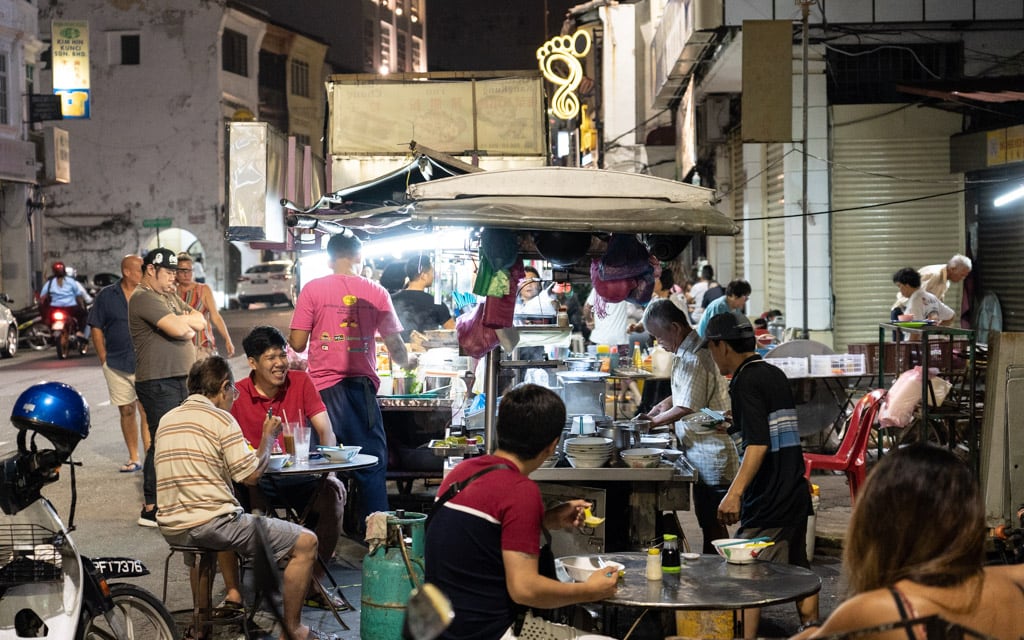
You might be wondering about the Chulia Street Night Market hours. Most stalls start selling food around 6:00PM and close up shop by midnight. The market is busiest around 8:00PM.
Each stall found at the market clearly lists what they are selling along with prices. I enjoy this as it makes ordering as a tourist much easier.
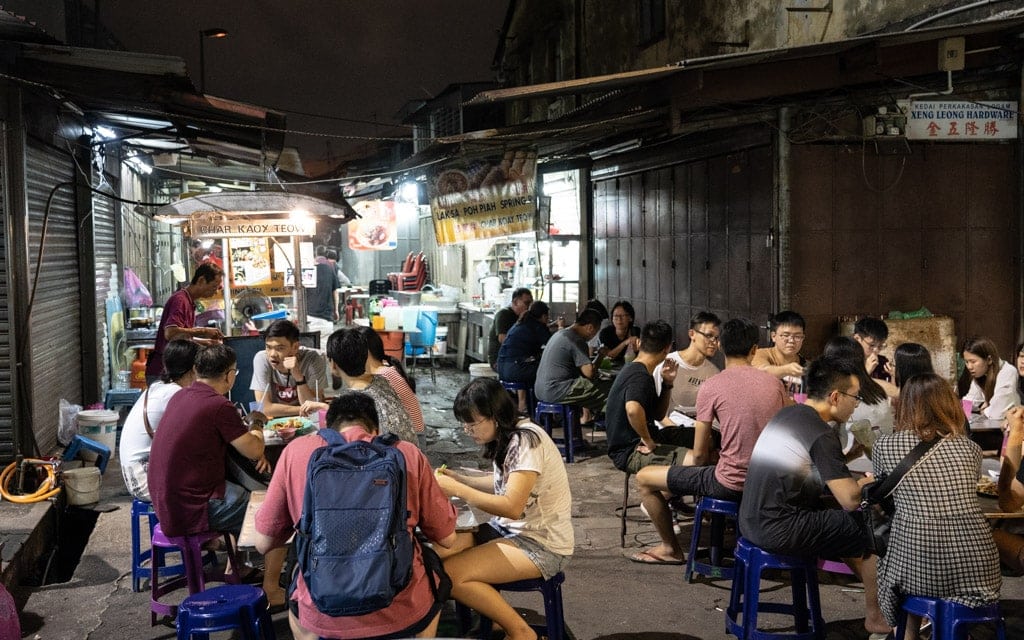
While you might be able to find better quality food elsewhere in Penang, for the price and experience, you really can’t ask for more. There was just something special about ordering freshly prepared street food and eating at small tables in the street. For me, this is one of the reasons why I travel across the world.
If you only have time to visit one night market in Penang, then this market might be your best choice. Here are a few of the foods I tried on my visit to the Chulia Street Night Market.
Table of Contents
Mother And Son Wantan Mee
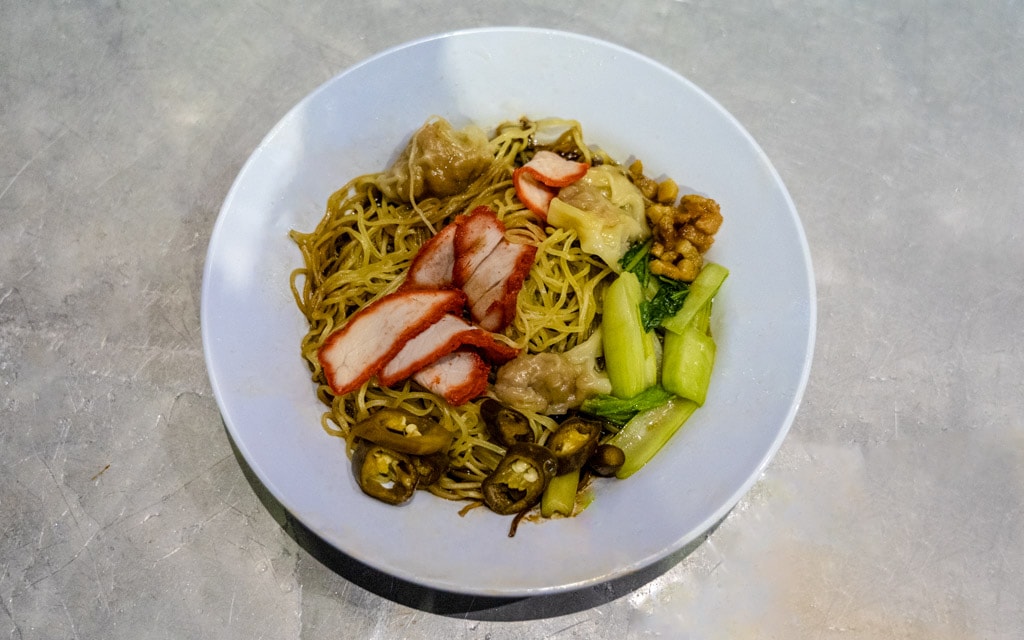
The most popular hawker stall found at Chulia Street Night Market is without a doubt Mother And Son Wantan Mee. Unless it is raining, or they were about to close, every seat adjacent to the stall is taken. If you don’t know what to eat at a market, look out for lines which usually means good food.
It was here where people were lining up to try the famous Wantan Mee (4.50 Ringgit for small or 6.00 Ringgit for large). Even though I ordered the smaller portion, it was more than enough for me. I probably could have even shared it, but with something so delicious, this wasn’t likely.
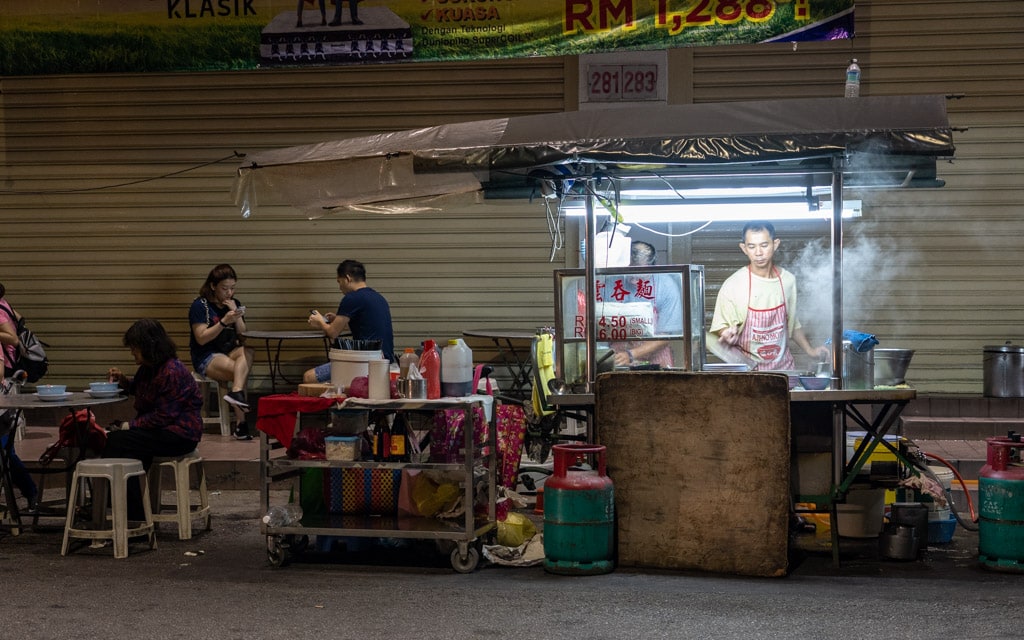
Wantan mee, or wonton noodles, is a Cantonese noodle dish originating in China. This dish is now popular in Southeast Asia including Malaysia, Singapore, Indonesia, and Thailand. While appearing simple, there are many important components that make up wantan mee.
Wantan mee is usually served in a hot broth, but this version was relatively dry. Instead of a broth, a base of dark soy sauce was used which pooled at the bottom of the bowl. A quick toss and the salty, oily, rich sauce coated every component of the dish. The thin round egg noodles, tender barbecued char siew pork, and delicate dumplings seemed to soak up all the sauce.
Topping off this bowl were crispy fried pork bits, large pieces of crispy greens, and pickled peppers. The most unique competent of the dish had to be the pickled peppers which added a kick of heat along with a crisp, acidic bite.
Popiah
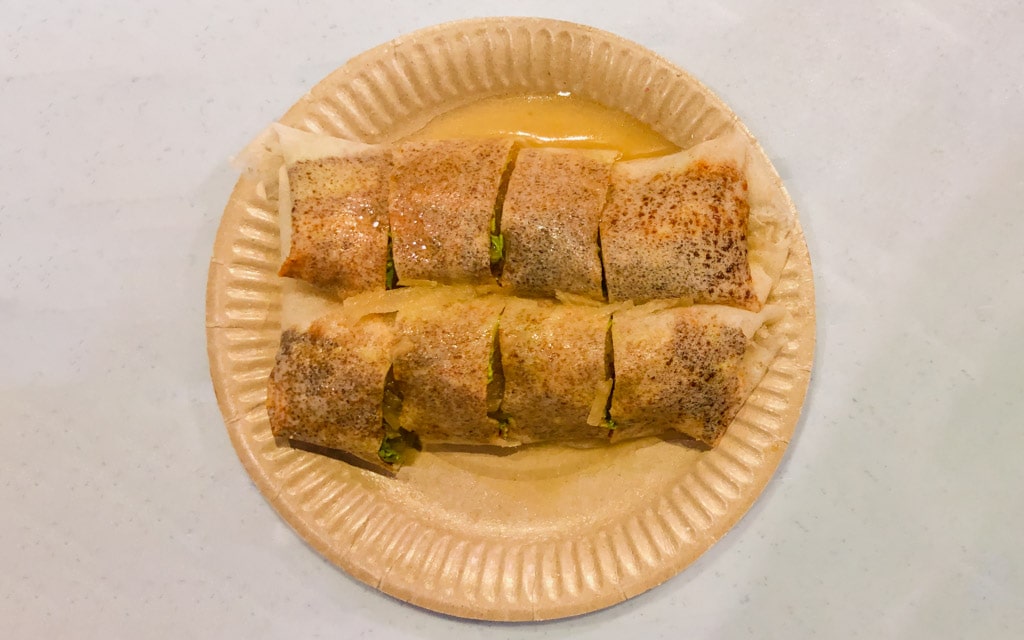
The first time I tried popiah was at the Chinatown Complex Food Centre in Singapore. After ordering the famous clay pot rice from Lian He Ben Ji Clay Pot Rice, I was told the wait would be an hour for my food to be prepared.
To pass the time, I grabbed a few ice cold Tiger beers from a nearby stall and took a seat. At many of these hawker centres, seating is limited so you just have to sit where you find an open seat. I ended up sitting next to some locals who were also drinking Tiger beers.
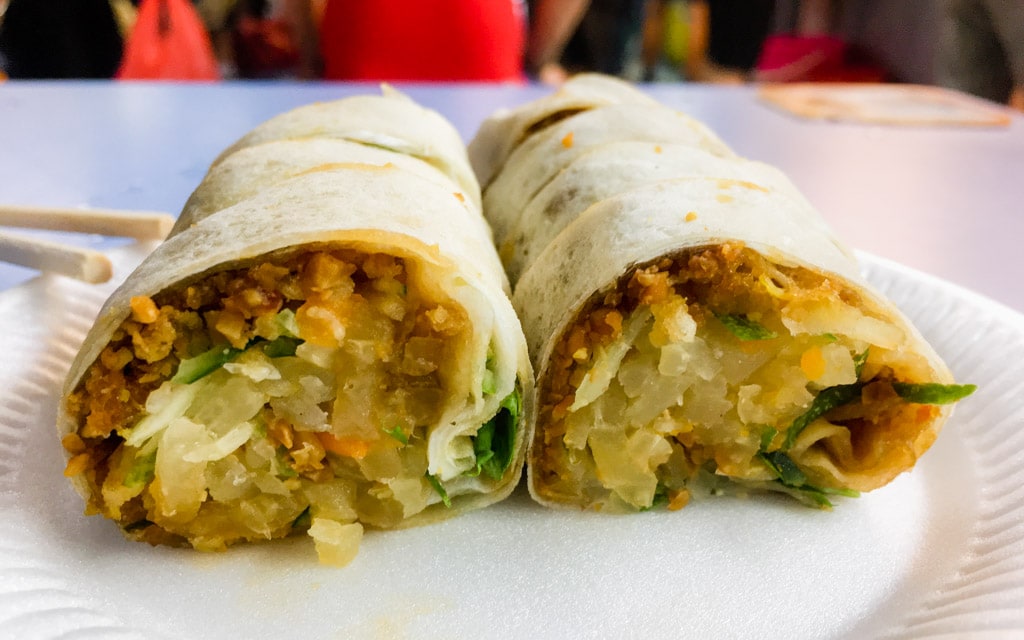
Over the next hour or two, the beers seemed to flow non-stop as me and my new friends talked about life, traveling, and Singapore. Along with beers, I was offered an assortment of foods to try. One of these foods, which I had never tried before, was popiah. It was one of those traveling memories I will never forget.
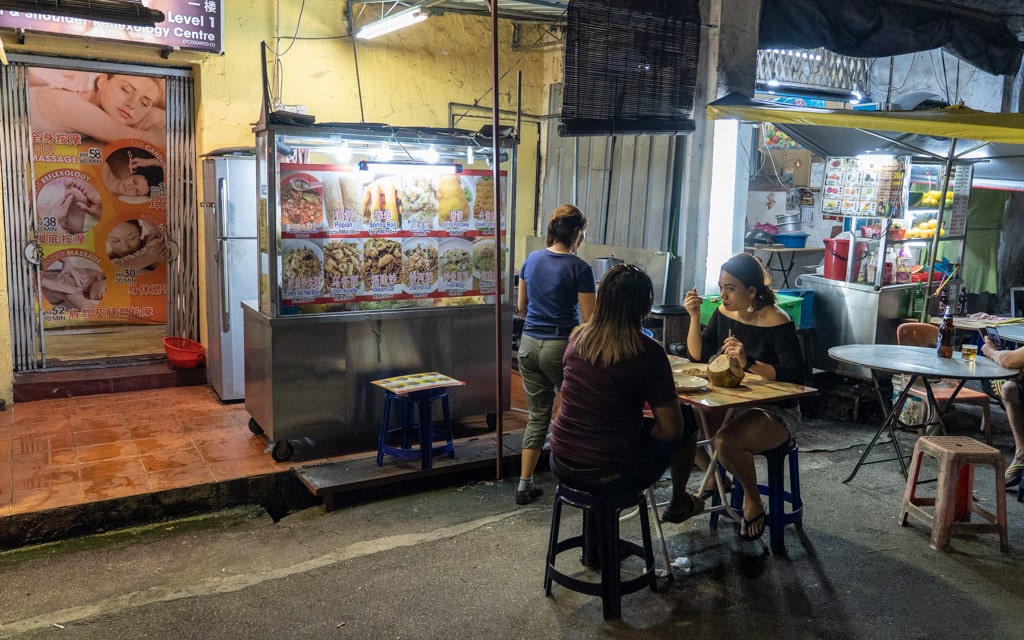
Fast forward a year later to my visit to Penang. As I was walking past all the stalls at the Chulia Street Night Market, one thing immediately caught my attention. And, that was the stall selling popiah (4 Ringgit or about $0.96).
What is popiah?
So you are probably wondering, what is popiah? Popiah is a fresh spring roll originating from China. The thin skin of the roll, made with wheat flour, is similar to a crepe or pancake. Popiah fillings can vary widely depending on the region or even the stall. Common fillings include stir-fried turnip, jicama, bean sprouts, carrots, lettuce, peanut, shallots, pork, and shrimp.
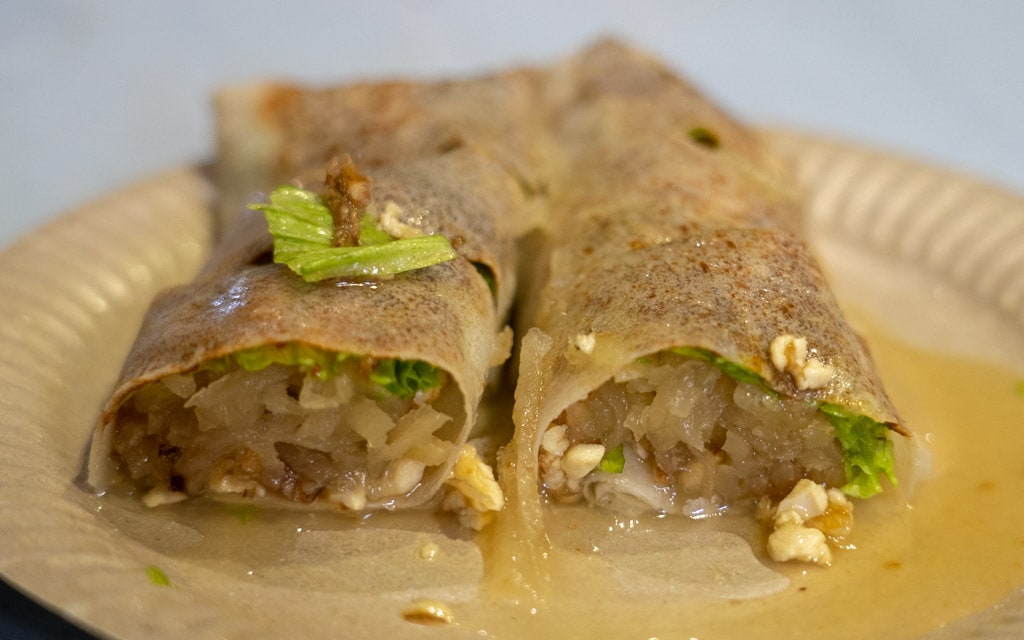
The first thing that caught my attention with this version of popiah was the watery sauce which pooled on the plate. This was a little surprising and different as the popiah I had in Singapore was dry. I was wondering at this moment if I should have ordered this.
As mentioned before, the thin skin was like a mixture between a crepe and pancake which was lightly toasted on the outside. Though thin, the skin held up to all the ingredients stuffed inside of it. While the skin is important, the real star of popiah are the fillings.
A generous amount of stir-fried turnip was stuffed inside the popiah along with peanuts and a few pieces of shredded lettuce. The stir-fried turnip reminded me of shredded potatoes. Though soft, the turnip had a good bite to it. It didn’t just melt or fall apart but added a crunchy texture to each bite.
And, the turnip was quite moist which contributed to the watery sauce. This moisture also softened up the peanuts which were more tender and meaty than crunchy. I could also taste a hint of sweet chili sauce which added a kick of heat.
While this popiah was not the most flavorful dish you can find at the Chulia Street Night Market, I ate it all. And, I enjoyed it, especially with an ice cold beer.
Lebuh Carnavon Lok Lok
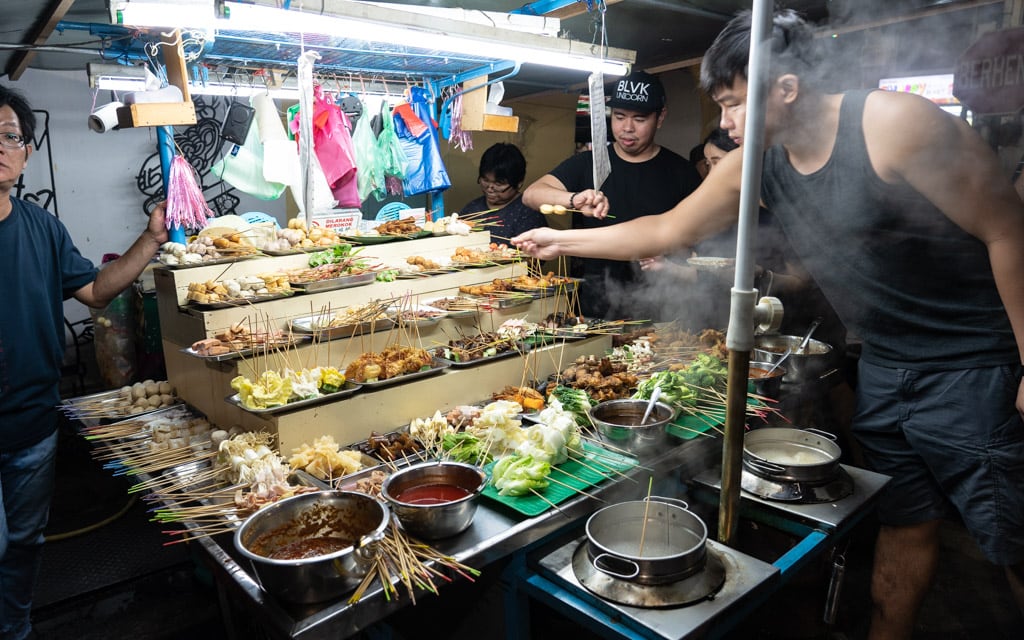
When you think of snacks on a stick in Southeast Asia, the first thing that comes to mind would probably be satay. If you don’t know what satay is, it’s a popular dish where meat is skewered, grilled, and usually served with a peanut dipping sauce. In Malaysia, including Penang, there is another popular snack on a stick known as lok lok.
Lok lok, which means “dip dip” in the Malay language, is a dish where skewered meats and vegetables are cooked by dipping the skewers into boiling water or broth. Just as with satay, lok lok is often served with an assortment of dipping sauces including sambal sauce or sweet chili sauce.
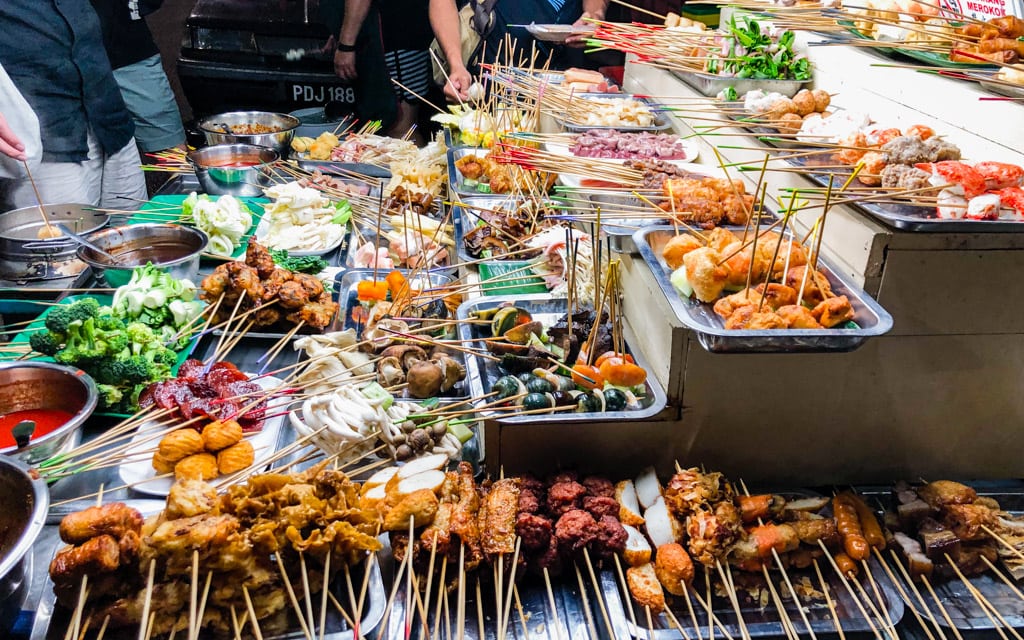
Lok lok is considered to be fast food in Malaysia. It’s cheap and often eaten before or after a main meal, especially after a long night of drinking. Types of skewers vary from stall to stall but usually include meatballs, fish balls, sausages, vegetables, dumplings, tofu, eggs, and more.
After a few drinks back at home in Los Angeles, I might have a late night meal at In-N-Out Burger. In Malaysia, you eat lok lok.
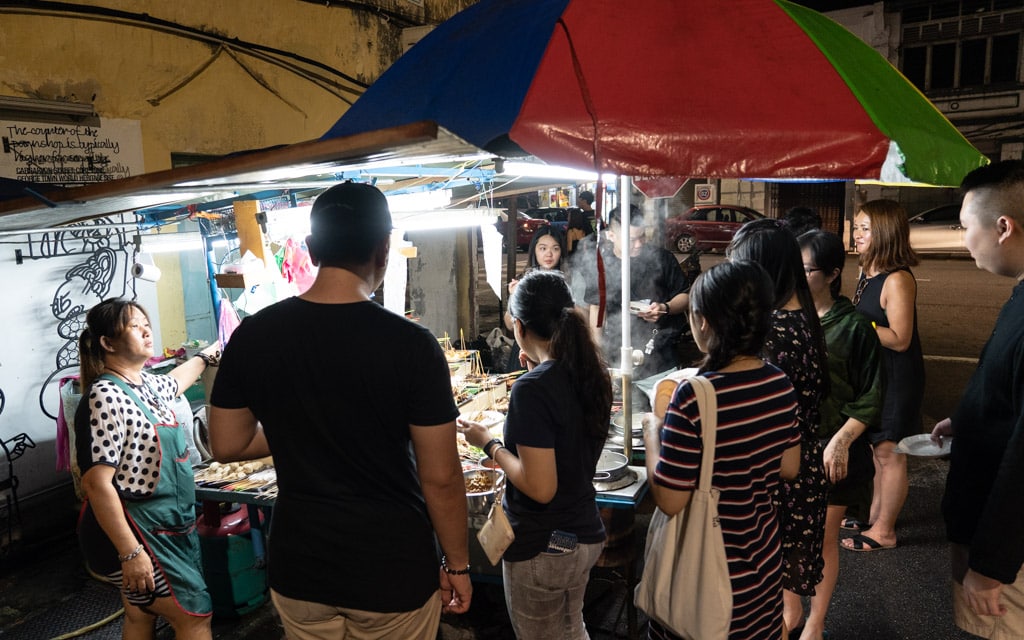
Out of all the places I ate at the Chulia Street Night Market, none were more memorable than Lebuh Carnavon Lok Lok. At all hours of the night, there were crowds of people standing around this bright stall.
As this was my first time trying lok lok, I had to first watch other people and then try to copy them. After watching for a minute or two, I realized there wasn’t much to it. Just grab away. You could grab whatever skewers you wanted. It might be tough to see in the photos, but each stick of lok lok was colored.
Skewers were priced depending on the color from 0.50 to 2 Ringgit (or about $0.12 to $0.48). When you are done eating, you will be charged accordingly just as you would at any rotating sushi restaurant.
Now comes the fun part. Once you picked out a few skewers, carefully drop each one into the communal pot of boiling water. Cooking times will vary depending on which skewers you selected. If you are unsure, just take a peak every minute or so. Just be careful as the water in the pot is hot and will burn you.
As for me, I kept it simple with meatballs, fish balls, and one of my favorites, quail eggs.
The pork meatballs, though tiny, were dense and packed a lot of flavor with sweetness from Chinese five spice and a smoky flavor from being grilled. The fish ball was much more interesting. It was hollow in the middle and stuffed with bits of pork. It was the perfect combination of salty fish ball and rich pork filling.
The quail eggs were simple as expected. They were cooked throughout and became warm and tender after a quick dunk in the boiling water.
Sure Lebuh Carnavon Lok Lok might have been geared towards tourists but I really enjoyed the experience and the cheap filling food. If you are in the mood for something inexpensive and fun, then this is your spot.
Lebuh Carnavon Lok Lok is open Monday through Saturday from 6:00PM to 12:00AM. They are closed on Sunday.
Address & Contact
On Chulia Street near the intersection of Lebuh Carnavon
GPS Coordinates: 5.418242,100.336387
Hours
Monday-Sunday: 6:00PM-12:00AM
Map
Last Updated on January 31, 2024
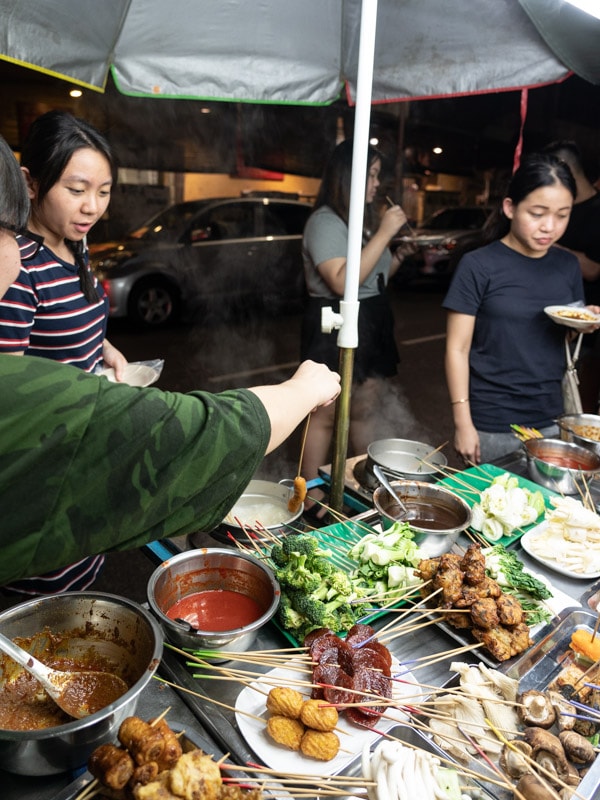
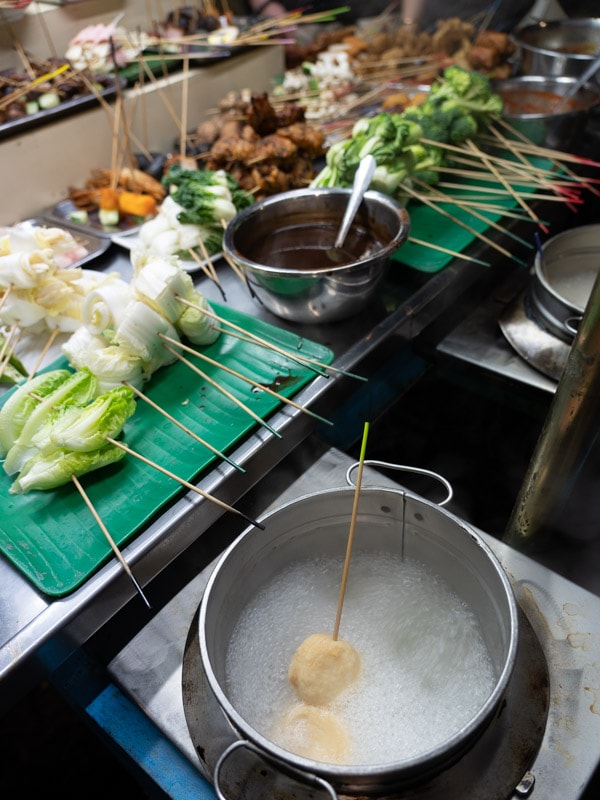
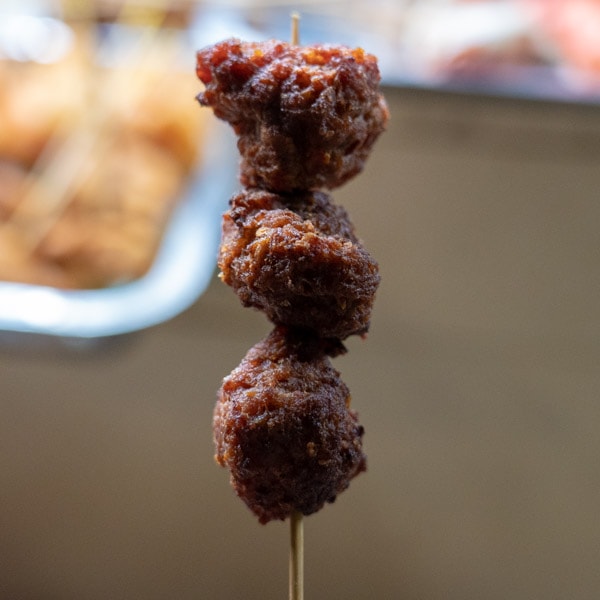
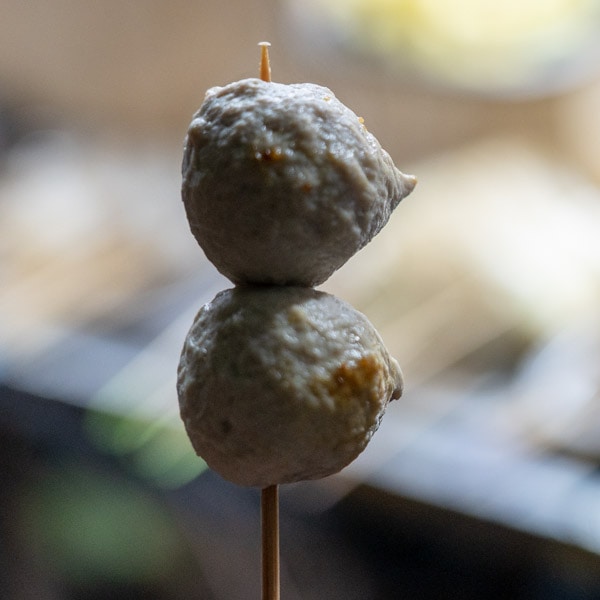
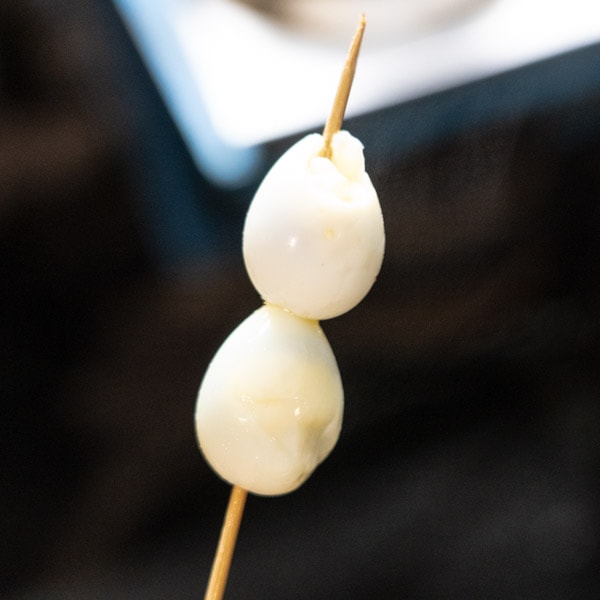
Related Posts